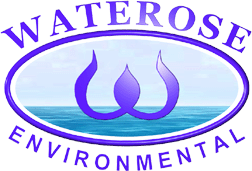 | ||||||
| Articles | Projects | Resume | Cartoons | Windsurfing | Paintings | Album |
Sustainable Development Series:
The Effect of Poverty, Greed, and Chemicals
on Human Health and the Environment

by Waterose
There is no doubt that human health is linked to the state of the environment (Keating, 1997). We are in an era of resource wars, overpopulation and disease (Peacock, 1996). Direct effects link to the water we drink, the air we breathe, and the food we eat. Indirect effects are not as visible (Keating, 1997). These include environmental degradation, ozone depletion, and soil degradation. So, what causes these problems: chemicals, poverty, or greed? While these three are inter-related, human health is the passenger (Copes, 1998) and greed is the driver. Poverty is the precursor to greed which creates more poverty. Chemicals in the environment are a result that affects human health. So how does this work?
Fundamentally, we need food, air, and water to survive. We secure these resources from our environment. Historically, the more abundant the resources the more these resources were squandered (Peacock, 1996). What parent would not harvest the egg from the nest of the last remaining bird to feed their starving child to survive (Ward, 1996)? Human population growth is exponential (Peacock, 1996). Our success at reproducing our species and exploiting the environment is due to our language skills and technological ingenuity. Even decimation of many of the large mammals, such as the mammoth or the North American Bison, is due to the our hunting prowess, which is an earlier version of human ingenuity (Wilson, 1996). Overharvesting is a symptom of greed that caused the decimation of the civilisation on Easter Island by wiping out the flora and fauna which sustained the human population there (Diamond, 1996).
Humans strive to move from poverty to sustenance to prosperity usually at a cost to the environment (Anthony, 1997). This is reflected by the differences in human wealth and health between the developing countries and the developed countries. Human health is strongly correlated to wealth (Millar, 1998). Furthermore, Millar purports that an even distribution of income correlates to better health. The United Nations Development Programme measures wealth by life expectancy, education, and national income (Keating, 1997). The developing countries have the lowest level of health standards in the world which are attributed to poor living conditions, lack of food and clean water, and severe pollution. Conversely, the developed countries use technological innovation to develop chemicals which enhance both living conditions and economic prosperity. These countries have the highest health standards in the world but at a very high cost to the environment due to the introduction of anthropogenic chemicals.
These wealthy countries use chlorine in the drinking water which kills bacteria that can cause disease, yet even so, humans are still susceptible to disease from pathogenic outbreaks (Millar, 1998). Chemicals and toxic pollutants used in industrial processes to increase economic profits are ubiquitous in the water supply and are harmful to human health (Foran, 1995). Another example of harmful chemicals introduced into the environment are the ozone depleting chemicals, such as chloroflurocarbons, which are linked to blindness and skin cancer (Cooper, 1995). Harmful chemicals are the product of technological ingenuity to meet needs that far exceed basic sustenance. This level of consumption is driven by greed to have more than one needs and is the greatest driver of environmental problems that link to human health issues of today.
References:
Written for Royal Roads University ES401 Sustainability Lecture Series: Human Health and the EnvironmentAnthony, E. November 3, 1997. "Sustainability and the Environment." ES301 Seminar Lecture Series. Royal Roads University. Victoria, BC.
Cooper, M. H. 1995. "Ozone Depletion." in Taking Sides: Controversial Views on Environmental Issues. Sixth Edition. Ed. by T.D. Goldfarb. Dushkin Publishing. Guilford, CT. Pp. 290-298.
Copes, Dr. R. April 6, 1998. "Fine Particulates and Standards." ES401 Seminar Lecture Series. Royal Roads University. Victoria, BC.
Diamond, J. 1996. "Easterís End." in Living with the Earth: An Introduction to Environmental Philosophy. Ed. by K.A. Peacock. Harcourt Brace. Toronto, Ont. Pp. 65-74.
Foran, J. A. and Adler, R.W. 1995. "Cleaner Water, but not Clean Enough." in Taking Sides: Controversial Views on Environmental Issues. Sixth Edition. Ed. by T.D. Goldfarb. Dushkin Publishing. Guilford, CT. Pp. 162-169.
Keating, M. 1997. "Trends in the Quality of Life." in Canada and the State of the Planet: The Social, Economic and Environmental Trends that are Shaping our Lives. with Canadian Global Change Program. Oxford. Don Mills, Ont. Pp. 64-75.
Millar, Dr. J. March 30, 1998. "Human Health and the Environment." ES401 Seminar Lecture Series. Royal Roads University. Victoria, BC.
Peacock, K. A. 1996. "The Human Crisis: War, Disease, Poverty, and Overpopulation." in Living with the Earth: An Introduction to Environmental Philosophy. Ed. by K.A. Peacock. Harcourt Brace. Toronto, Ont. Pp. 63-78.
Ward, P. 1996. "A Parentís Nightmare." in Living with the Earth: An Introduction to Environmental Philosophy. Ed. by K.A. Peacock. Harcourt Brace. Toronto, Ont. Pp. 60.
Wilson, E. O. 1996. "Huntersí Blitzkrieg." in Living with the Earth: An Introduction to Environmental Philosophy. Ed. by K.A. Peacock. Harcourt Brace. Toronto, Ont. Pp. 53-60.
Return to Index of Articles

 email Waterose
email Waterose
Please Sign My Guestbook
Please View My Guestbook

| Articles | Projects | Resume | Cartoons | Windsurfing | Paintings | Album |
 | ||||||